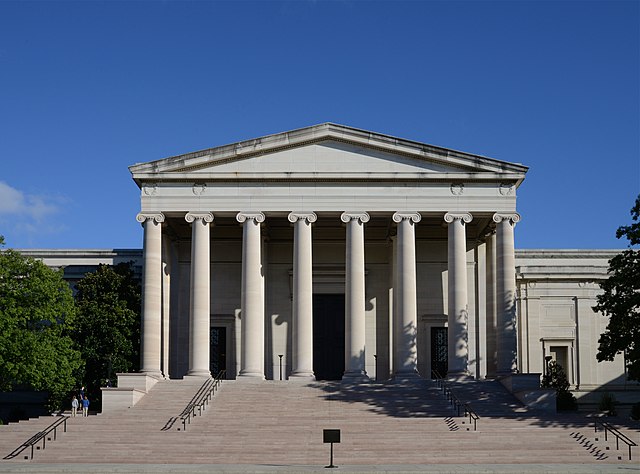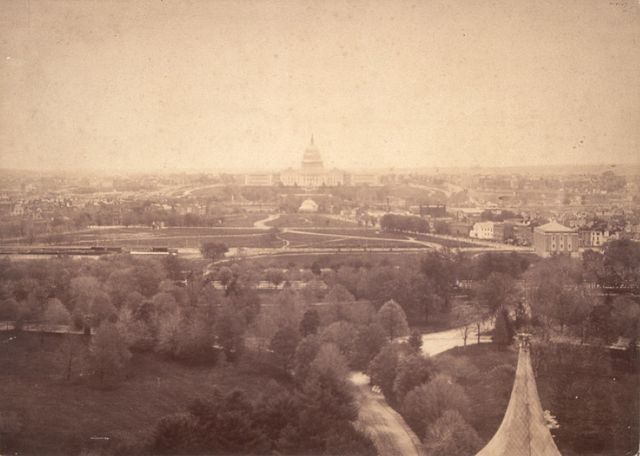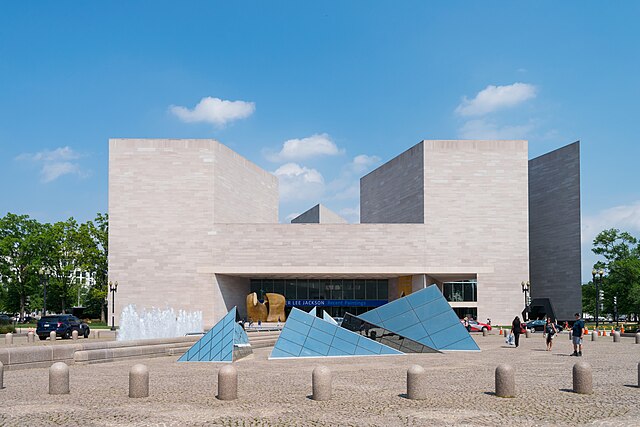Baltimore and Potomac Railroad Station
The Baltimore and Potomac Railroad Station, also known as Pennsylvania Railroad Station, was a railroad station that was owned by the Pennsylvania Railroad and operated by the Baltimore and Potomac Railroad in Washington, D.C., from July 2, 1872 until its closure in 1907. It was located at the southern corner of 6th street NW and B Street NW, now the site of the West Building of the National Gallery of Art. It was in this train station that United States President James A. Garfield was assassinated by Charles Guiteau.
The B&P Railroad Station
View of the eastern side of the Mall in 1879. A train at the station can be seen on the left. The square building on the right is the Armory.
Contemporary illustration of the assassination
Memorial marker in the station with gold star on the floor
The National Gallery of Art is an art museum in Washington, D.C., United States, located on the National Mall, between 3rd and 9th Streets, at Constitution Avenue NW. Open to the public and free of charge, the museum was privately established in 1937 for the American people by a joint resolution of the United States Congress. Andrew W. Mellon donated a substantial art collection and funds for construction. The core collection includes major works of art donated by Paul Mellon, Ailsa Mellon Bruce, Lessing J. Rosenwald, Samuel Henry Kress, Rush Harrison Kress, Peter Arrell Browne Widener, Joseph E. Widener, and Chester Dale. The Gallery's collection of paintings, drawings, prints, photographs, sculpture, medals, and decorative arts traces the development of Western art from the Middle Ages to the present, including the only painting by Leonardo da Vinci in the Americas and the largest mobile created by Alexander Calder.

The West Building facade of the National Gallery of Art in Washington, D.C.
The East Building
Exhibitions in the West Building
Exhibitions in the East Building








